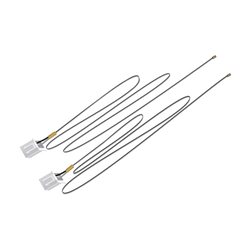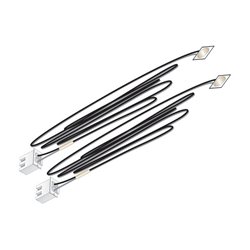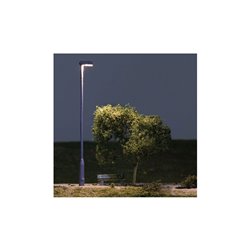An 'eggbeater' is a type of hand drill so-called because its appearance resembles an egg whisk.Officially known...
No products
Product successfully added to your shopping cart
There are 0 items in your cart. There is 1 item in your cart.
Search Tips
Christmas and New Year
We are dispatching orders every weekday apart from Christmas Day, Boxing Day and New Year's Day.
If you select next day delivery at checkout, please note deliveries are not made on public holidays or Sundays.
The shop in Sandown is open 23rd and 24th December, then closed from 25th December, reopening on 30th December.
How do I create illusions of depth and distance on a layout?
One of the greatest challenges in model railway layout design is creating a convincing sense of depth and distance within the compact dimensions of most layouts. Even the largest home layouts are still models at a reduced scale, so skilled modellers must employ various techniques to trick the eye into perceiving realistic depth and distance. By understanding and utilising the right approaches, you can make your layout appear much larger than it truly is.
Diminishing sizes and details
A fundamental principle is making objects appear smaller and with less detail the further away they are situated. Decreasing the size of trees, buildings, vehicles and other scenery elements as they recede into the "distance" is crucial. Up close scenery pieces should have a higher level of detail, texture and weathering. The further away they are positioned, the less specific detail is needed as the human eye will perceive less texture from a distance.
Atmospheric perspective
Another technique that works hand-in-hand with diminishing sizes is atmospheric perspective. This simulates the effect of the earth's atmosphere making distant objects appear faded, hazy and with less contrast. Use pale washes, dry brushing, or an airbrush to lightly mist distant scenery elements with a bluish or greyish tint. The further away an object, the lighter and lower contrast it should be with less vibrancy. Nearby scenery in the "foreground" should have richer colours and higher contrast.
Elevated horizon and forced perspective
Elevating your horizon line, where the sky meets the layout edge, will enhance depth perception. Having the far backdrop rise up above eye level creates a greater impression of distance. This ties in with forced perspective by positioning taller elements like trees and buildings further away, and shorter pieces closer. Even gently raising the terrain level towards the back can reinforce this illusion.
Lighting and shadows
Carefully planned lighting is a powerful tool for creating a sense of depth and distance. Vary the brightness and colour temperature of lights moving from the foreground to the background. Use brighter, warmer lights on closer scenery that casts stronger shadows. Background lighting should be dimmer and cooler in tone with more diffuse, softer shadows. Directional lighting that mimics sunlight also enhances depth through shadow density.
With some thoughtful layout planning, precise modelling, and application of these techniques, even a compact model railway can appear to go on for miles into the distant vista. Pay close attention to depth cues and it will greatly elevate the realism and immersion of your miniature world.
Click here to receive the tips weekly in your mailbox. You can unsubscribe at any time.










